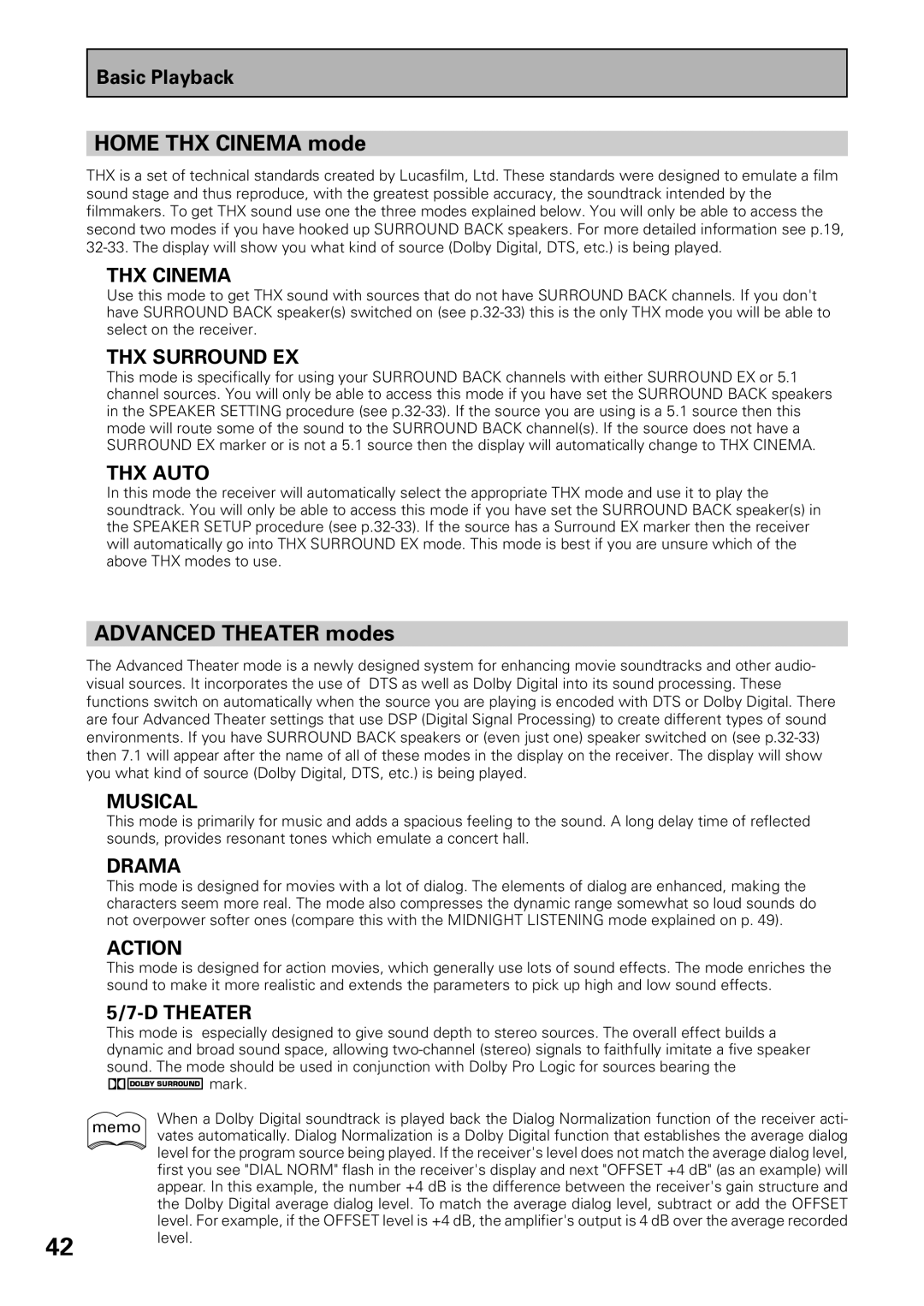
Basic Playback
HOME THX CINEMA mode
THX is a set of technical standards created by Lucasfilm, Ltd. These standards were designed to emulate a film sound stage and thus reproduce, with the greatest possible accuracy, the soundtrack intended by the filmmakers. To get THX sound use one the three modes explained below. You will only be able to access the second two modes if you have hooked up SURROUND BACK speakers. For more detailed information see p.19,
THX CINEMA
Use this mode to get THX sound with sources that do not have SURROUND BACK channels. If you don't have SURROUND BACK speaker(s) switched on (see
THX SURROUND EX
This mode is specifically for using your SURROUND BACK channels with either SURROUND EX or 5.1 channel sources. You will only be able to access this mode if you have set the SURROUND BACK speakers in the SPEAKER SETTING procedure (see
THX AUTO
In this mode the receiver will automatically select the appropriate THX mode and use it to play the soundtrack. You will only be able to access this mode if you have set the SURROUND BACK speaker(s) in the SPEAKER SETUP procedure (see
ADVANCED THEATER modes
The Advanced Theater mode is a newly designed system for enhancing movie soundtracks and other audio- visual sources. It incorporates the use of DTS as well as Dolby Digital into its sound processing. These functions switch on automatically when the source you are playing is encoded with DTS or Dolby Digital. There are four Advanced Theater settings that use DSP (Digital Signal Processing) to create different types of sound environments. If you have SURROUND BACK speakers or (even just one) speaker switched on (see
MUSICAL
This mode is primarily for music and adds a spacious feeling to the sound. A long delay time of reflected sounds, provides resonant tones which emulate a concert hall.
DRAMA
This mode is designed for movies with a lot of dialog. The elements of dialog are enhanced, making the characters seem more real. The mode also compresses the dynamic range somewhat so loud sounds do not overpower softer ones (compare this with the MIDNIGHT LISTENING mode explained on p. 49).
ACTION
This mode is designed for action movies, which generally use lots of sound effects. The mode enriches the sound to make it more realistic and extends the parameters to pick up high and low sound effects.
5/7-D THEATER
This mode is especially designed to give sound depth to stereo sources. The overall effect builds a dynamic and broad sound space, allowing
mark.
memo | When a Dolby Digital soundtrack is played back the Dialog Normalization function of the receiver acti- |
| vates automatically. Dialog Normalization is a Dolby Digital function that establishes the average dialog |
| level for the program source being played. If the receiver's level does not match the average dialog level, |
| first you see "DIAL NORM" flash in the receiver's display and next "OFFSET +4 dB" (as an example) will |
| appear. In this example, the number +4 dB is the difference between the receiver's gain structure and |
| the Dolby Digital average dialog level. To match the average dialog level, subtract or add the OFFSET |
| level. For example, if the OFFSET level is +4 dB, the amplifier's output is 4 dB over the average recorded |
42 | level. |
|
